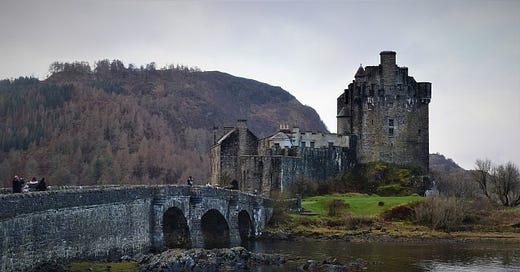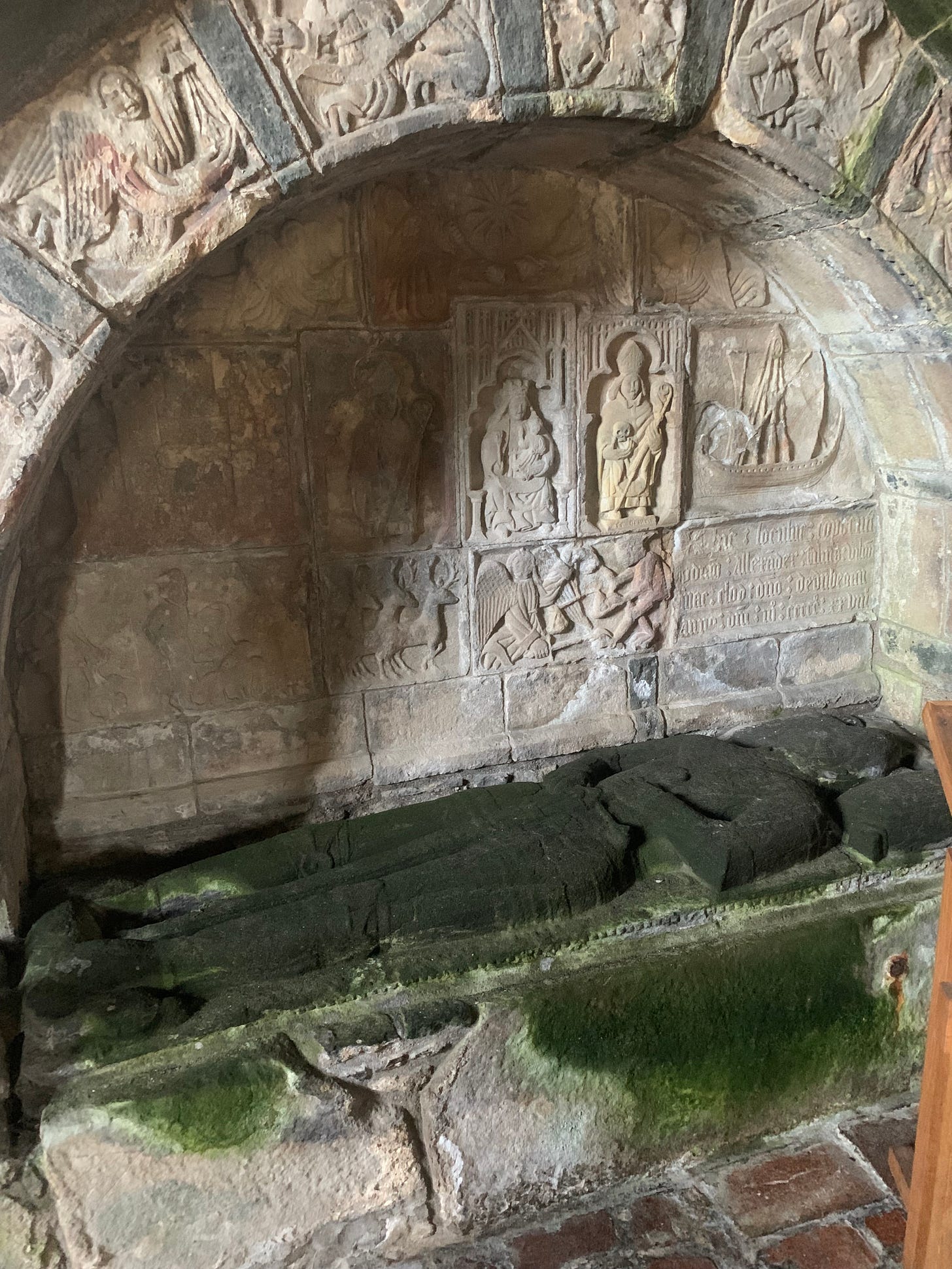The fairy and the flag
A Highland clan used a magic flag to beat its enemies. Maybe it still can?
We went to the Isle of Skye, off the west coast of Scotland. It’s a dramatic place, made more dramatic by buildings such as Dunvegan Castle in the north. This is the home of the MacLeods of Harris and Dunvegan.
The clan has been in charge here since the thirteenth century, when it built the castle. It no longer owns the Isle of Harris across the water, but is still well-entrenched on Skye. The thirtieth chief, Hugh Magnus, is the current MacLeod of MacLeod. And if you go to the drawing room, you can see hanging on the wall its most valuable possession: the Fairy Flag:
If it looks a bit worn, that’s because it’s 1,600 years old. According to the castle website it was probably made of silk in the fourth century in Syria or Rhodes.It may have looked something like this originally (thanks to Mr700000 on Reddit for the re-creation):
Anyway, the flag was really useful and extracted victory from defeat for the MacLeods more than once. In the 1500s the clan was almost permanently at war with the MacDonalds. It was led by the redoubtable Alasdair Crotach, who made it all the way to 97. Here’s his tomb on the Isle of Harris:
Once, the MacDonalds of Clan Ranald invaded Skye, setting fire to a church and killing many worshippers. But, the historian John Roberts reports, ‘the MacLeods under Alasdair Crotach had rallied their forces under the miraculous banner of the Fairy Flag, and utterly defeated the MacDonalds.’
Dunvegan’s website offers three origin stories. One is that it was given to a MacLeod crusader by a spirit. The second is that a baby MacLeod was restless in a tower of the castle and a fairy turned up and wrapped him in a silken shawl. The third is that once upon a time a MacLeod chief married a fairy. They could only stay together for a year and a day, and the fairy gave him the banner as a goodbye present. That’s the one I believe.
During the Second World War, pilots from the MacLeod clan carried its picture as a talisman, and Dame Flora MacLeod – then head of the clan – offered to wave it on the white cliffs of Dover to repel a German invasion. Here she is:
‘Whatever the truth,’ the site says, ‘the Chief and the clan have a profound respect for the Fairy Flag and its mystical power’. Which seems very wise.









Sea eagle? Raven? Heron? Goose?
Amazing, particularly the tomb. And the chieftain(ess). Can you identify the bird who donated the feathers in her cap? As for the origin story, it’s the crusader, surely?